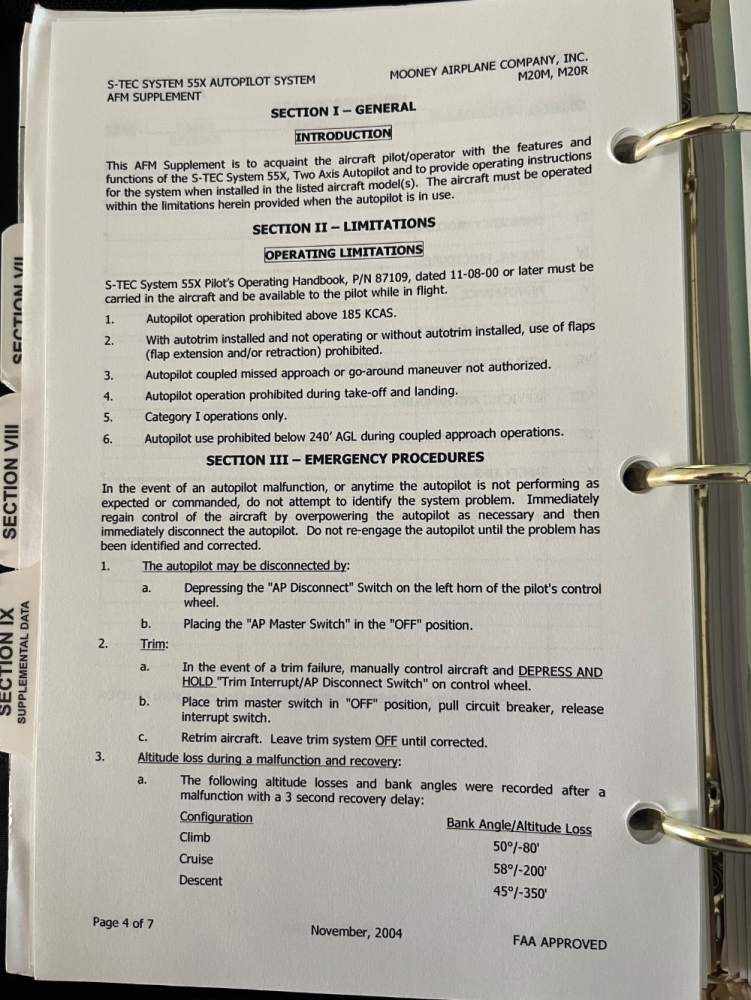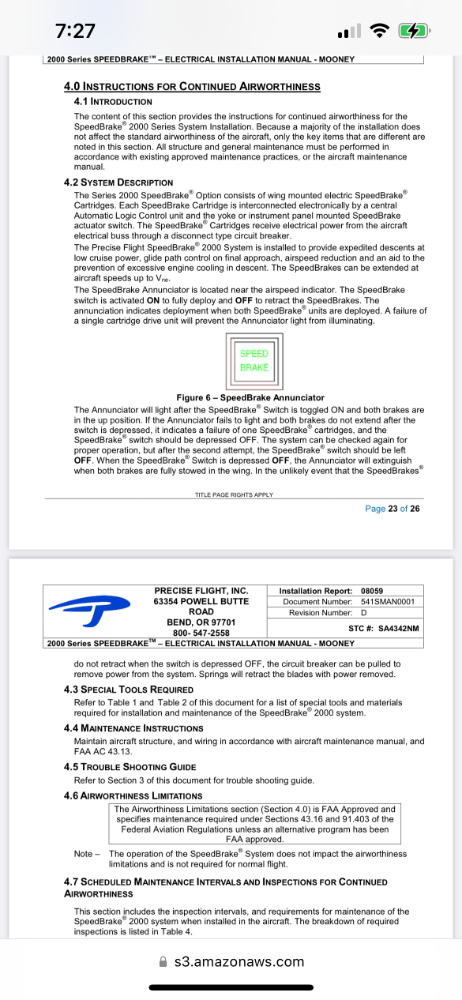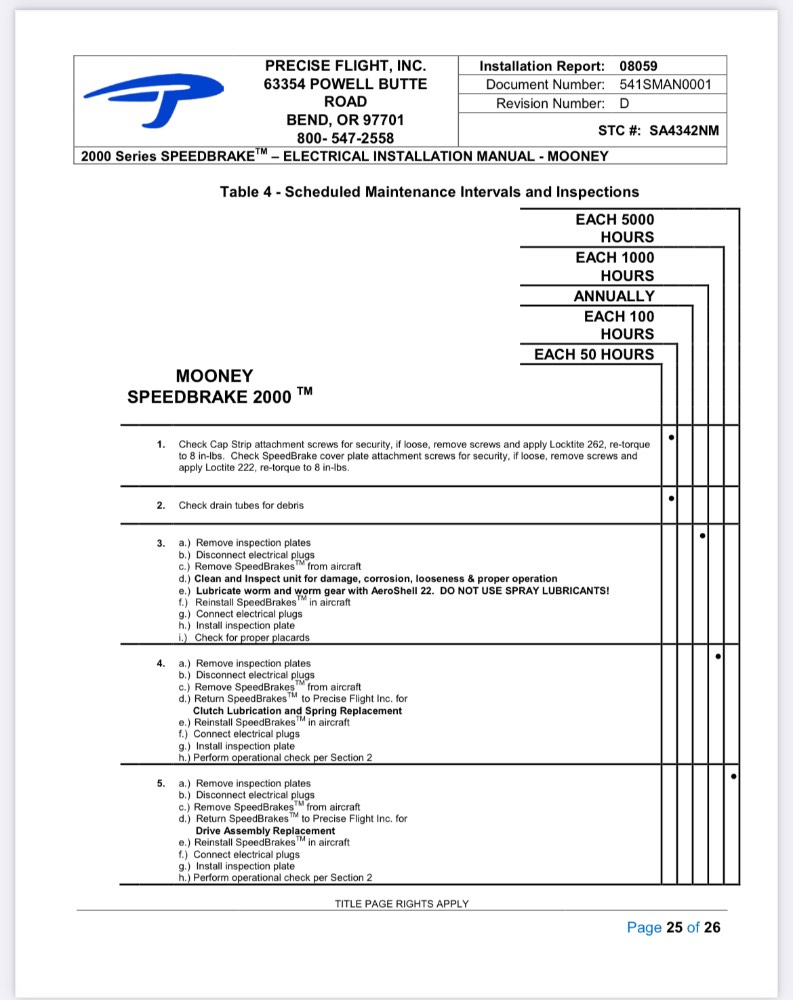
Deb
Supporter-
Posts
353 -
Joined
-
Days Won
3
Content Type
Profiles
Forums
Blogs
Gallery
Downloads
Media Demo
Events
Everything posted by Deb
-
Based on the G100UL fuel leak thread what's your position?
Deb replied to gabez's topic in General Mooney Talk
Del Lehmann posted this on BeechTalk (https://www.beechtalk.com/forums/viewtopic.php?f=7&t=234904&start=645): I do not generally take in fuel leaks as a stand-alone job, but I have repaired many Mooney wings due to bird/animal strikes, hail damage, ramp rash.....maybe 15-20 wings over 30 years. Every integral fuel tank skin that we have drilled off lacked faying surface sealant between the internal structure (ribs, stringers) and the skin. It's obvious they were assembled dry, then buttered up the seams and rivet butts by working through the access holes. This is unique among the big four (I've seen some early Piper tanks like this, but rare). Cessna and Beech all have faying surface sealant. I've heard that Mooney did try assembling the tanks wet for a period of time and then went back to dry. If they were actually shooting the rivets with wet faying sealant, that wouldn't have helped. The riveting (hammering) action will displace the sealant. The wet sealant also acts as a lubricant between the bucking bar and rivet, causing an improper upset we call "elephant foot". The rivet bucktail sets before the shank swells tight. This is worse than shooting together dry. The best way is to apply the faying sealant, then put a Cleco in every hole (Cleco is a temporary fastener. Need lots of Clecos). Then once the sealant is cured you can shoot the solid rivets. The faying sealant also acts as an adhesive between the skin and structure and inhibits movement. Now, the only potential leaks are the rivet butts, so all one has to do is butter the butts, leak test and good to go for decades. That's not what Mooney did. -
Phil Corman discusses 4 routes across the Rockies on page 13 of the November, 2013 issue of The Mooney Flyer. Here’s a link to that issue: https://themooneyflyer.com/issues/2013-NovTMF.pdf#page13. Back Country Pilot has a longer article here: https://backcountrypilot.org/knowledge-base/destinations/193-colorado-crossing-continental-divide.
-
The 4 charges were dismissed by a judge (one charge of entering an area without a special use permit was dismissed with prejudice). The tribe has the option of refiling the other 3 charges. Video here:
-
If i was landing i would say it is not that important. If i was 10 gallons away from landing i would say yes! Our Ovation 2 POH states: FUEL LIMITATIONS –WARNING– Takeoff maneuvers when the selected tank contains less than 12 gallons of fuel have not been demonstrated. So we’d want more than 12 gallons in the selected tank for landing in case we needed to go around.
-
-
It’s actually a bit more nuanced; here’s the definitive answer from John Collins: The LPV CDI FSD (Full Scale Deflection) is 1 NM until reaching a point 2 NM prior to the FAF. The FSD then transitions to the value for the FAF to threshold. At the FAF, this is equivalent to +/- 2 degrees measured from a calculated point beyond the threshold such that when at the threshold, the FSD is +/- 350 feet. It continues at a fixed value of +/- 350 feet until reaching a reference point (about 1000 feet from the threshold) and after that, is changes to a fixed value of +/- 0.3 NM. So as a practical matter, it is similar to an ILS with a runway length of about 10000 feet. It is angular for the final approach course (+/- 2 degrees) and not a fixed value. It is +/- 350 feet at the threshold and continues at this value for another 1000 feet before increasing back to 0.3 NM. My reference for this is from RTCA DO229D, which is the technical specification for a TSO C145/146 WAAS GPS Navigator. You have to be a member of RTCA to get this document for free or must pay $370 for a copy. Here is some description from the 10/12/2017 AIM 1-1-18, d 4 (page 1-1-34): 4. Both lateral and vertical scaling for the LNAV/VNAV and LPV approach procedures are different than the linear scaling of basic GPS. When the complete published procedure is flown, ±1 NM linear scaling is provided until two (2) NM prior to the FAF, where the sensitivity increases to be similar to the angular scaling of an ILS. There are two differences in the WAAS scaling and ILS: 1) on long final approach segments, the initial scaling will be ±0.3 NM to achieve equivalent performance to GPS (and better than ILS, which is less sensitive far from the runway); 2) close to the runway threshold, the scaling changes to linear instead of continuing to become more sensitive. The width of the final approach course is tailored so that the total width is usually 700 feet at the runway threshold. Since the origin point of the lateral splay for the angular portion of the final is not fixed due to antenna placement like localizer, the splay angle can remain fixed, making a consistent width of final for aircraft being vectored onto the final approach course on different length runways. When the complete published procedure is not flown, and instead the aircraft needs to capture the extended final approach course similar to ILS, the vector to final (VTF) mode is used. Under VTF, the scaling is linear at ±1 NM until the point where the ILS angular splay reaches a width of ±1 NM regardless of the distance from the FAWP.
-
There is Sun-n-Fun pricing at $195 each. @OSUAV8TER may have even better pricing…
-
N9156Z Minnesota crash final report
Deb replied to Brandt's topic in Mooney Safety & Accident Discussion
From https://www.ncbi.nlm.nih.gov/books/NBK526010/#_article-20535_s3: “The liver metabolizes diphenhydramine via CYP450. It is excreted in the urine, unchanged, and has a half-life of 3.4 to 9.2 hours. The drug's time to peak, serum is 2 hours.” So, going with 5 half-lives (https://www.faa.gov/pilots/safety/pilotsafetybrochures/media/meds_brochure.pdf), you get 17-46 hours. -
A list of instructors from The Mooney Flyer is here: https://themooneyflyer.com/cfi.html and Mooneyspace has a thread here:
-
Continental counterweight SB coming, all engines after 6-1-2021
Deb replied to philiplane's topic in Modern Mooney Discussion
The AD is due to be published 2/23/2023 and is available here https://public-inspection.federalregister.gov/2023-03796.pdf. As Paul (@kortopates) posted, there is no exception for engines with 200 or more hours; it appears that all affected aircraft will be grounded as of Thursday, February 23: “Differences Between this AD and the Service Information The service information specifies compliance for engines with less than 200 operating hours, while this AD requires compliance for all affected engines, regardless of the operating hours. The FAA has determined that this unsafe condition, of improperly installed counterweight retaining rings, is likely to exist on affected engines. While the manufacturer's service information excludes engines accumulating 200 or more operating hours, the FAA has not, as of yet, been provided with adequate data to support that exclusion. In the event the FAA receives data to support the exclusion of engines with more than 200 operating hours, or make other changes to this AD, the FAA may consider further rulemaking. […] Due to the low operational hours on the known crankshaft assembly failures, the short-term risk to the fleet is such that expeditious action must be taken and therefore this AD is effective upon publication. The FAA is issuing this AD to address the unsafe condition on these products. As the affected crankshaft assembly must be inspected before further flight after the effective date of this AD, the compliance time for the required actions is shorter than the time necessary to allow for public comment and for the FAA to publish a final rule.” [emphasis added] -
Voilà:
-
A bit of good news… [emphasis added] From https://www.continental.aero/Potential-Safety-of-Flight-Issue.aspx: “Continental has identified a potential safety of flight issue for aircraft equipped with Continental 360, 470, 520, 550 series engines and replacement crankshaft assemblies. Consequently, Continental is preemptively advising that an inspection should be performed to confirm that the crankshaft counterweight retaining ring was properly installed in new and rebuilt engines assembled between June 1, 2021, and February 7, 2023. This advice also applies to replacement crankshaft assemblies manufactured between June 1, 2021, through February 7, 2023. Continental proactively recommends that all flights powered by the aforementioned engines with less than 200 operating hours be limited to 5 additional flight hours with the essential crew to position the aircraft at a maintenance facility. To further clarify, Continental engines with over 200 hours may continue normal flight operations. A service bulletin with affected serial numbers will be forthcoming.” Edit: The Mandatory Service Bulletin is posted here: http://www.tcmlink.com/pdf2/MSB23-01.pdf.
- 1 reply
-
- 2
-

-

-
The short answer is yes. § 61.23 Medical certificates: Requirement and duration. (a) Operations requiring a medical certificate. Except as provided in paragraphs (b) and (c) of this section, a person […] (3) Must hold at least a third-class medical certificate […] (iii) When taking a practical test in an aircraft for a recreational pilot, private pilot, commercial pilot, or airline transport pilot certificate, or for a flight instructor certificate, except when operating under the conditions and limitations set forth in § 61.113(i) [emphasis mine] § 61.113 Private pilot privileges and limitations: Pilot in command […] (i) A private pilot may act as pilot in command of an aircraft without holding a medical certificate issued under part 67of this chapter provided the pilot holds a valid U.S. driver's license, meets the requirements of § 61.23(c)(3), and complies with this section and all of the following conditions and limitations: […] (and lists the requirements for BasicMed): (3) The pilot has available in his or her logbook - (i) The completed medical examination checklist required under § 68.7 of this chapter; and (ii) The certificate of course completion required under § 61.23(c)(3).
-
There’s a discussion here https://www.boldmethod.com/learn-to-fly/maneuvers/should-you-fly-runway-heading-or-runway-centerline-on-takeoff-vfr/. Basically, it depends whether it’s a towered or non-towered. At non-towered airports, the Airplane Flying Handbook states on page 5-6: "During initial climb, it is important that the takeoff path remain aligned with the runway to avoid drifting into obstructions or into the path of another aircraft that may be taking off from a parallel runway. A flight instructor should help the student identify two points inline ahead of the runway to use as a tracking reference. As long as those two points are inline, the airplane is remaining on the desired track. Proper scanning techniques are essential to a safe takeoff and climb, not only for maintaining attitude and direction, but also for avoiding collisions near the airport." At towered airports, referring to the ATC instruction “fly runway heading”, FAA JO Order 7110.65W (Controller’s “Bible”) states: “When cleared to "fly or maintain runway heading," pilots are expected to fly or maintain the heading that corresponds with the extended centerline of the departure runway. Drift correction shall not be applied [Emphasis added]. For instance, if the actual magnetic heading of the runway centerline for Runway 4 is 044, fly 044." Further, the Instrument Procedures Handbook states on page 1-42: "Runway heading is the magnetic direction that corresponds with the runway centerline extended (charted on the airport diagram), not the numbers painted on the runway. Pilots cleared to 'fly or maintain runway heading' are expected to fly or maintain the published heading that corresponds with the extended centerline of the departure runway (until otherwise instructed by ATC), and are not to apply drift correction [for wind]."
-
Interestingly, the Precise Flight Speedbrake 2000 Installation Manual https://drive.google.com/drive/mobile/folders/1zNzigTBKlcwuP15YLIlblPUmIxntvRkR/1YL2qbshoCTjBBmTnsjagvjaTAO0rsEvb/1UT6ozCB-VW5IsapNzysKtLfz3c5rmLNV?usp=sharing&sort=13&direction=a has a Section 4 titled “Instructions for Continued Airworthiness “ on page 23 and 24 (specifically items 4.6 and 4.7): Here’s page 25 with the maintenance schedule:
-
Best way to affix new wing fuel sight guage
Deb replied to Chris K's topic in Modern Mooney Discussion
Some ideas here: -
14 CFR § 21.9 Replacement and modification articles. (a) If a person knows, or should know, that a replacement or modification article is reasonably likely to be installed on a type-certificated product, the person may not produce that article unless it is - (1) Produced under a type certificate; (2) Produced under an FAAproduction approval; (3) A standard part (such as a nut or bolt) manufactured in compliance with a government or established industry specification; (4) A commercial part as defined in § 21.1 of this part; (5) Produced by an owner or operator for maintaining or altering that owner or operator's product; (6) Fabricated by an appropriately rated certificate holder with a quality system, and consumed in the repair or alteration of a product or article in accordance with part 43 of this chapter; or (7) Produced in any other manner approved by the FAA. (b) Except as provided in paragraphs (a)(1) through (a)(2) of this section, a person who produces a replacement or modification article for sale may not represent that part as suitable for installation on a type-certificated product. (c) Except as provided in paragraphs (a)(1) through (a)(2) of this section, a person may not sell or represent an article as suitable for installation on an aircraft type-certificated under §§ 21.25(a)(2) or 21.27 unless that article - (1) Was declared surplus by the U.S. Armed Forces, and (2) Was intended for use on that aircraft model by the U.S. Armed Forces. FAA Legal Interpretation: Byrne Memorandum on owner produced parts: http://www.velocolutions.com/FAA-owner-manufactured-part.pdf AC 23-28: https://www.faa.gov/documentlibrary/media/advisory_circular/ac_23-27.pdf Some other articles/summaries: https://www.csobeech.com/files/FAA-OwnerProducedParts-DonDodge.pdf https://www.aviationpros.com/home/article/10387511/owner-produced-parts-how-they-affect-maintenance https://www.cessnaflyer.org/maintenance-tech/item/984-owner-produced-parts-regulations-interpretations-and-applications.html
-
You left out great guys and awesome mechanics.
-
Awesome work Patrick, thanks!
-
Mooney down at KHEG (Jacksonville, FL)
Deb replied to Hector's topic in Mooney Safety & Accident Discussion
The preliminary NTSB report has been released https://data.ntsb.gov/carol-repgen/api/Aviation/ReportMain/GenerateNewestReport/104442/pdf. -
Prebuy in eastern Minnesota or western Wisconsin
Deb replied to Lptoro's topic in General Mooney Talk
Oasis Aero in Willmar, MN is a top Mooney Service Center (320-214-9669); Eric Rudningen is a terrific A&P IA and a great guy. You can’t do better. We fly from South Florida to Willmar for our annuals. -
The factory started manufacturing WAAS G1000 Mooneys sometime in mid-late 2007. There were a few GFC 700 non-WAAS airframes produced; all the S-Tec G1000 Mooneys were originally non-WAAS. The Bravos were all initially non-WAAS. Some of the early 2007 Acclaims were non-WAAS, but almost all of them in the US were upgraded to WAAS. The surest way to tell if if a G1000 Mooney is WAAS is to remove the avionics bay panel on the pilot’s side of the fuselage and look at the part number of of the GIA units; the GIA 63 (non-WAAS) is p/n 011-00781-00 and the WAAS GIA 63W is p/n 011-01105-01 or -20.




